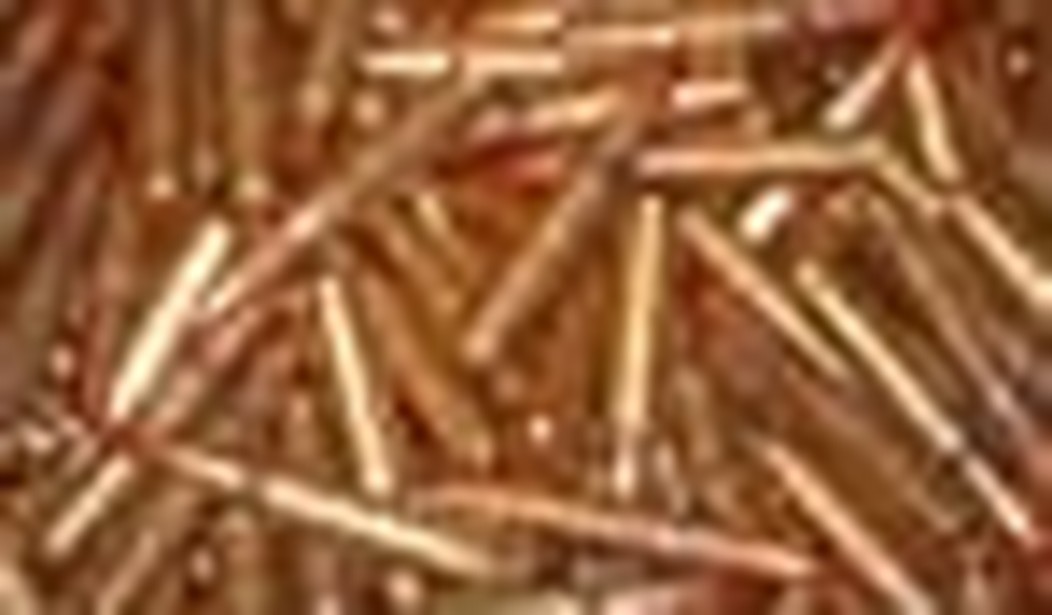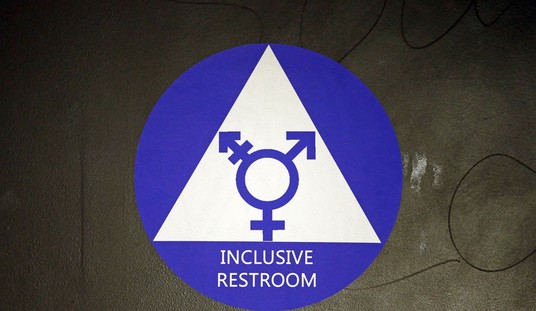Scan the ammunition shelves at sporting goods stores, your local gun store, or even Walmart and odds are that you won’t find what you are looking for. The most common cartridges are in short supply, and many stores ration ammunition a box or two at a time to spread their meager stock among their customers.
This isn’t new. But why is this nationwide ammunition shortage still happening?
The shortage began no later than 2007, when law enforcement agencies began having problems placing massive bulk orders, their typical purchasing strategy. The Associated Press tried to blame the shortages on the wars in Iraq and Afghanistan, a falsehood that was easily debunked by pointing out that the military has its own dedicated small arms ammunition plant that — running at peak efficiency — was producing a half-billion rounds per year more than the military was using at that time.
Instead, the primary reason for that shortage turned out to be law enforcement agencies themselves, because of a horrifying incident that shook law enforcement nationwide to its core. On February 28, 1997, in North Hollywood, CA, Larry Phillips, Jr. and Emil Matasareanu, two heavily armed and armored bank robbers, engaged in a 44-minute shootout with an outgunned Los Angeles Police Department. The two suspects fired more than 1,300 rounds of ammunition, and each was shot multiple times with police handguns. The 9mm police pistol bullets bounced off their homemade body armor. Phillips eventually died after being shot 11 times; Matasareanu died after being hit 29 times.
In response, law enforcement agencies nationwide embraced civilian versions of the military M4 selective-fire carbine as a long arm suitable for engaging heavily armed and armored felons beyond pistol range with greater precision and stopping power. This focus on deploying carbines only intensified after the 9/11 terror attacks, as agencies began preparing to deal with potential terrorist threats as well as criminal acts. SWAT and ERT teams first used these weapons, but they quickly spread to supervisors, and within a few years, officers and deputies. They are now euphemistically known as a “patrol rifles” and carried as a standard-issue long arm in patrol cars around the nation (even on some university campuses).
The widespread use of patrol rifles among law enforcement and the possibility of terrorism meant an increase in range time for many officers using their duty sidearms, and an almost entirely new law enforcement market for 9mm, 40 S&W, and 5.56 NATO/.223 Remington caliber carbines. When combined with China gobbling up core ammunition components such as brass, copper, and lead for their exploding industry, the shortage was simply explained by a massive increase in demand that has yet to let up.
That demand only escalated as a result of the recession and the 2008 election. President Obama is no friend of the Second Amendment, which caused gun owners to stock up on firearms and ammunition in fear that the administration would push for a restoration of failed gun control laws that expired during the Bush administration. The economic instability of the recession and a resurgent acceptance of shooting sports also created many first-time gun buyers, many of whom developed into avid shooters who use significant amounts of ammunition.
As I concluded last February:
Shortages of ammunition and firearms can be expected to continue for as long as it appears our overreaching federal government is a threat to our individual liberties, our economy continues to falter, and our police agencies keep militarizing. It’s going to be a long ride.
Indeed, nearly a year and a half later, ammunition is still in short supply.
Remington, which had not tapped all of their manufacturing capacity a year ago, is now “operating at over 100% capacity at our munitions plant and turning out millions of rounds per day.” A national sporting goods chain is still able to stock Remington ammunition in several popular calibers, but restricts customers to two boxes of ammunition at a time.
Jackie Stenton at Fiocchi USA notes an “unprecedented demand” for centerfire pistol ammunition, which has “impacted sourcing components for all centerfire product, and rimfire products.” From this view, it appears that demand for pistol ammunition is so high that the core components are being pulled into manufacturing pistol rounds, instead of rifle and rimfire ammunition — a claim that empty shelves in all three categories would seem to confirm. Jonathan Harling, a spokesperson for Winchester, confirms that the massive demand is widespread and that they are also “still working 24-7 to meet the demand.”
But by far the most interesting comments about the current shortage come from a pair of less widely known but very respected manufacturers, DoubleTap Ammunition and Silver State Armory. DoubleTap is perhaps best known for their high-velocity defensive pistol ammunition, which has a hefty reputation — and elite prices. They are still “ahead of the curve” and have been able to keep their performance-minded customers supplied. Other manufacturers in the niche market of high-velocity, high-performance ammunition are also able to keep up with demand, no doubt due to the fact that customers will fire hundreds or thousands of rounds of practice ammunition, or “regular” production defensive ammo, for every box of premium defensive ammunition.
But premium rifle ammunition manufacturer Silver State Armory’s Mark Thibodeau had perhaps the most interesting comment, noting that according to their research, the shortage isn’t isolated inside America’s shores.
Our information and research tells us that the increased demand is global, not just domestic, and the demand is still increasing further. The demand for the end product, loaded ammunition, further impacts the availability of raw materials: brass, powder, primers, projectiles. Certain calibers are going to be harder to find than others by virtue of popularity and priority. While the retail consumer may be “stocking up,” that pales in comparison to the consumption of product globally that is the real reason for shortages.
Thibodeau’s insight may very well be dead-on, as supplies of ammunition by foreign manufacturers are also in very short supply.
There is no doubt the demand for key ammunition components such as brass, copper, and lead in the global industrial market may be a large part of the current component shortage, but that still leaves us with millions of rounds being manufactured domestically every day that are snapped up the moment they hit the marketplace.
Where is it all going? Are these hundreds of millions of rounds of domestically manufactured ammunition being stockpiled, or are they being shot as fast as they are purchased? I’m sure someone has the answers to these questions, but they aren’t talking. They’re happy to be selling, and I can’t say that I blame them in the least.









Join the conversation as a VIP Member